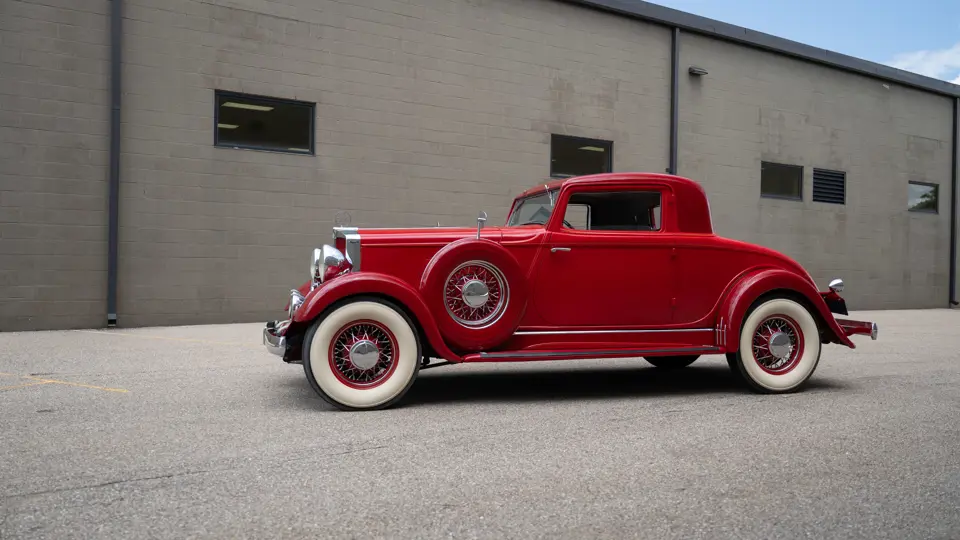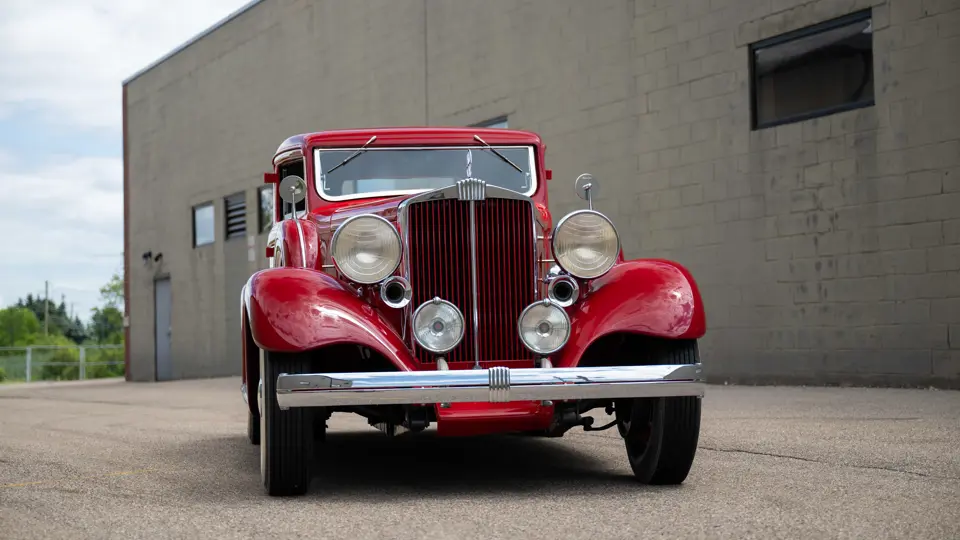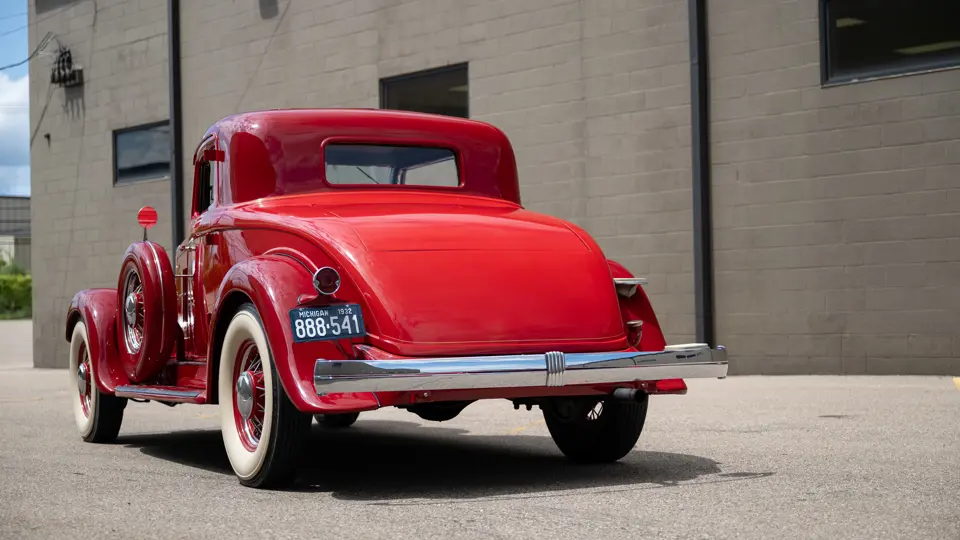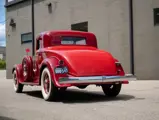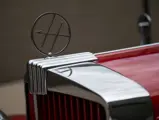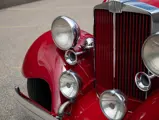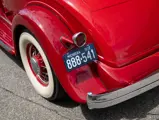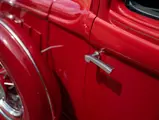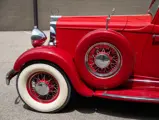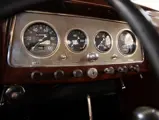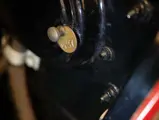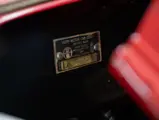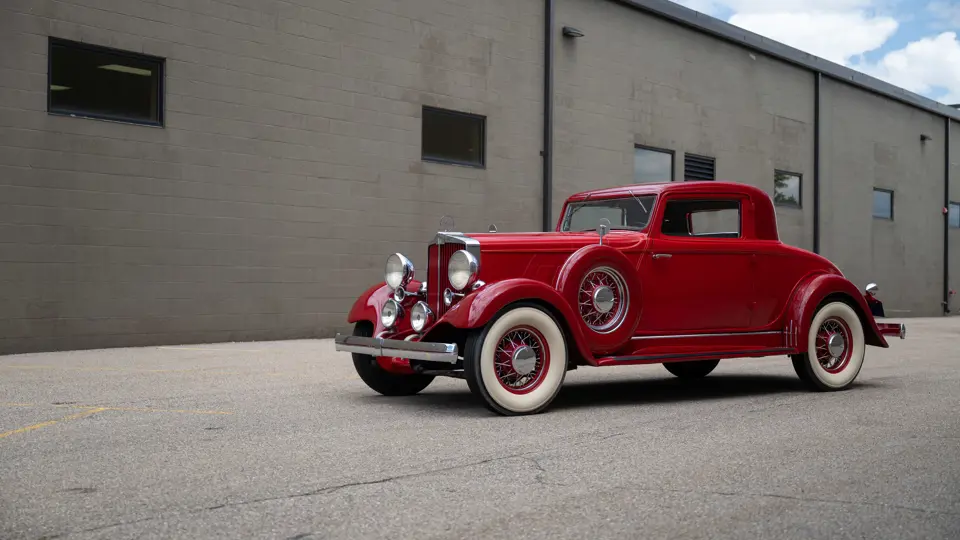
1932 Hupmobile I 266 Eight Coupe
{{lr.item.text}}
$71,500 USD | Sold
The Terence E. Adderley Collection
{{bidding.lot.reserveStatusFormatted}}
- Formerly owned by the famed Harrah’s Automobile Collection
- A senior “cycle fender” Hupp; one of the great Art Deco automobile designs
- One of just two known surviving copies of this body style
- Accompanied by a copy of its Harrah’s history file
Independent Detroit automaker Hupp fought the Great Depression with bold designs. One of its most striking debuted in 1932, created by the famed industrial designer Raymond Loewy, later of Studebaker fame. It incorporated cycle-style front fenders, which melded cohesively with the distinctive grille, the wide, V-shaped beltline molding, and the sweeping flare of the rear fenders. These automobiles were among the most beautiful upper-mid-priced cars of their time and true masterpieces of Art Deco design, but have become extraordinarily scarce in the passing decades. This is especially true for the more costly “senior” models, including the I 226 with its 103-brake-horsepower, inline eight-cylinder engine and “free-wheeling” transmission.
Only two examples of the I 226 coupe are known to have survived. The history of the example offered here is known back to Andrea Piccardo Jr. of Jackson, California, believed to have been the original owner, who sold it in the 1960s to the famed Harrah’s Automobile Collection. Harrah’s famous shop freshened the car lightly and put it on display in their famous halls, and it was recorded in several of the rosters published by Harrah’s over the years.
In subsequent ownership, a cosmetic restoration in the mid-1990s saw the car refinished to its present crimson and the interior in dark maroon leather. From all appearances, the body has still never been removed from the frame, and the undercarriage and engine bay are both nicely presented and of a high driver quality. Acquired by Terence E. Adderley in early 2015, the car has been on display, both in previous ownership and within the Adderley Collection for many years, and would benefit from mechanical service prior to use.
A “cycle fender” Hupp of any type is quite a rarity, yet few of these striking Art Deco automobiles have the jaunty, even aggressive design of the I 226 coupe—one of the most beautiful of its rarefied ilk. This example, with rich history including time in two of the United States’ most famed and respected collections, is sure to tempt any enthusiast of great American designs.





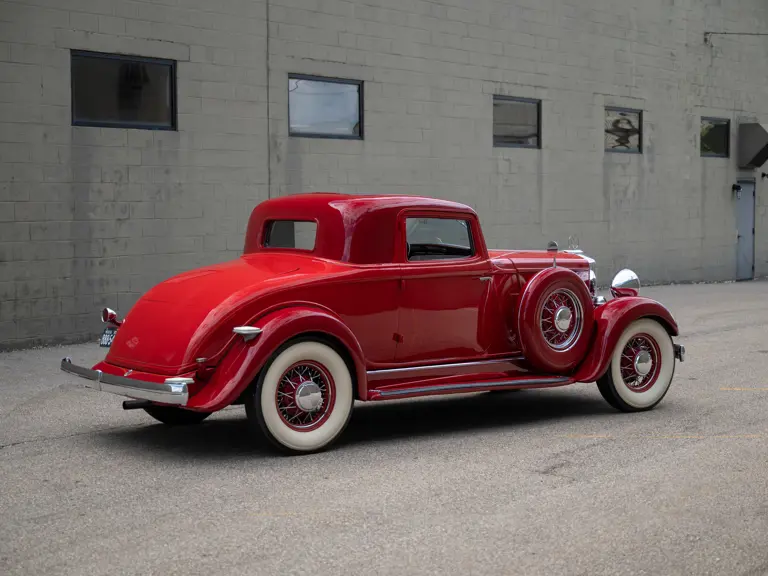
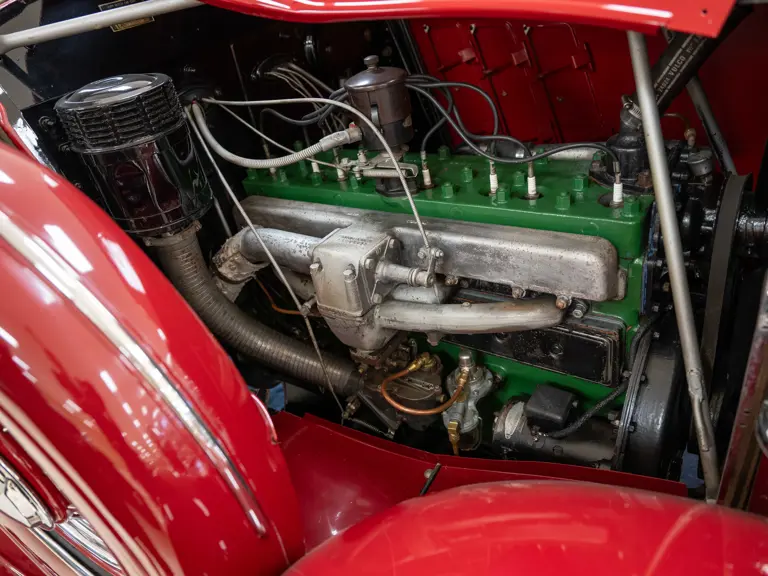
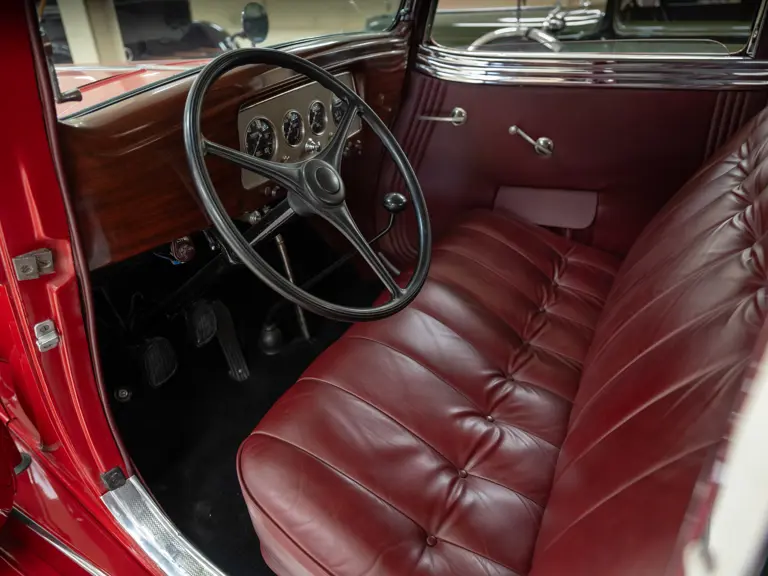

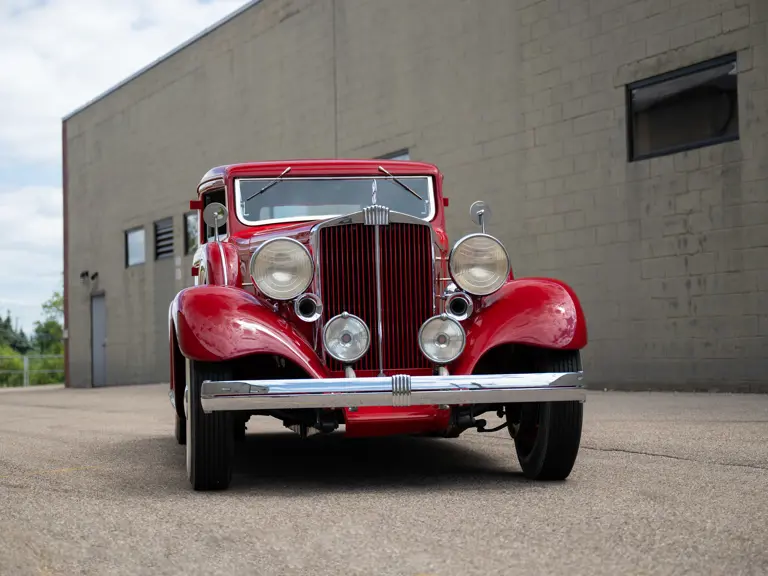
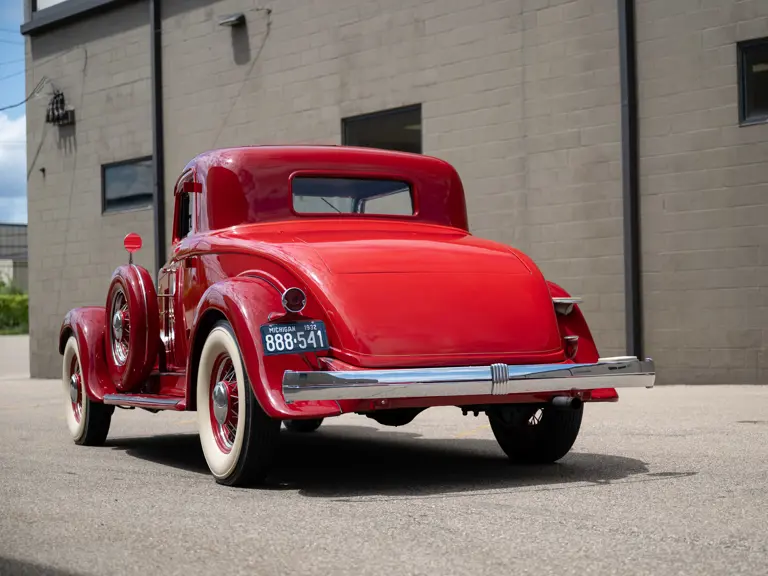
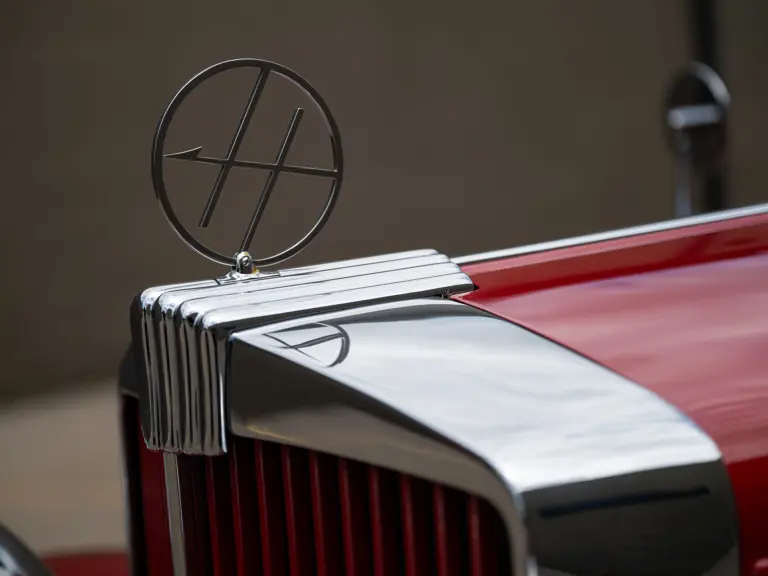

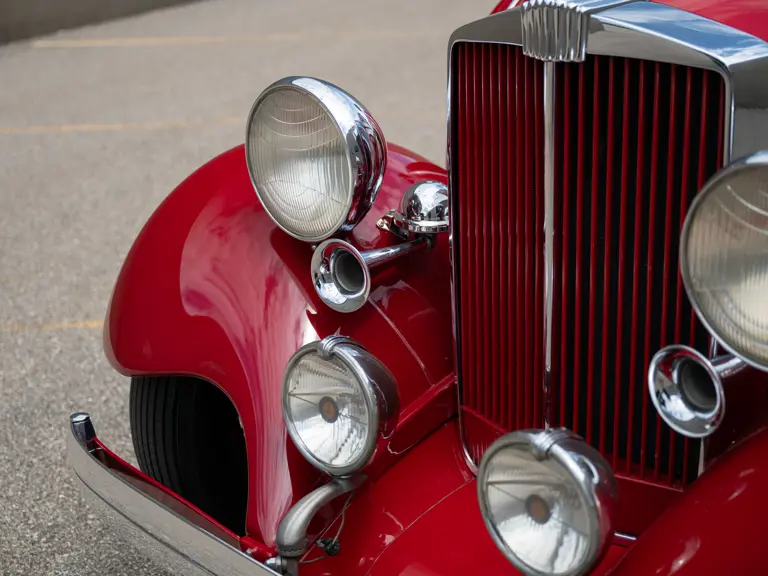
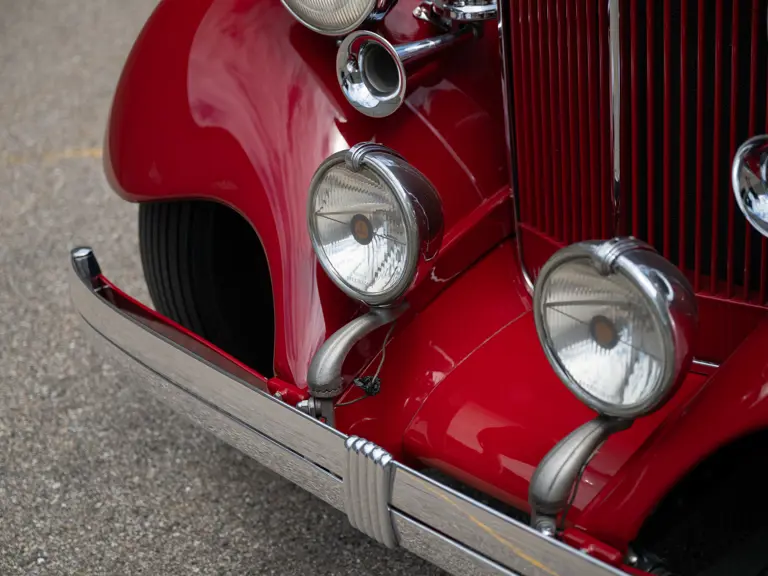
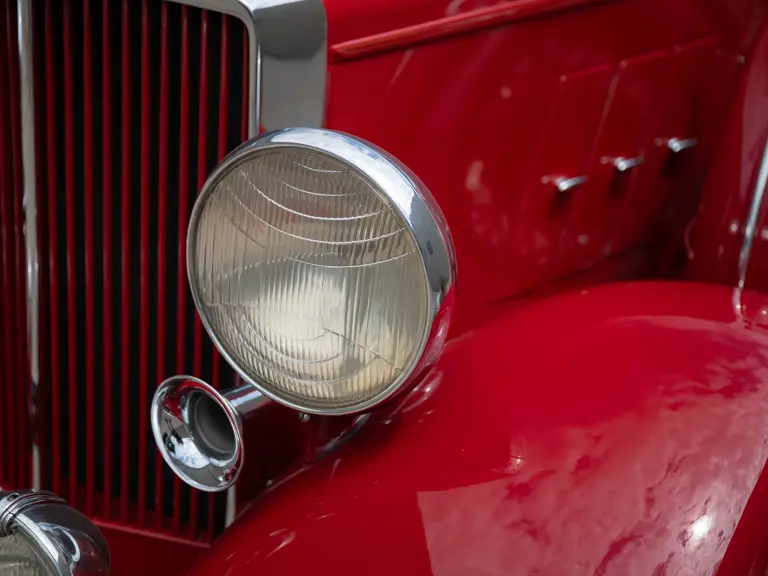
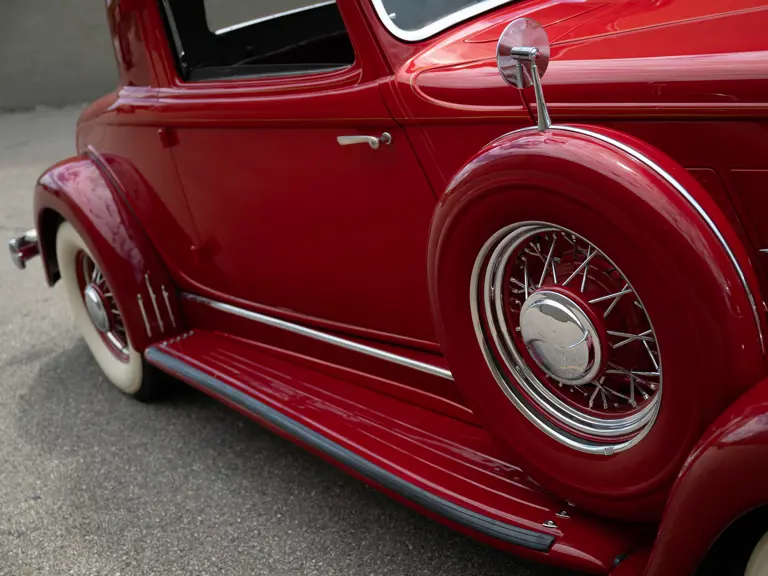
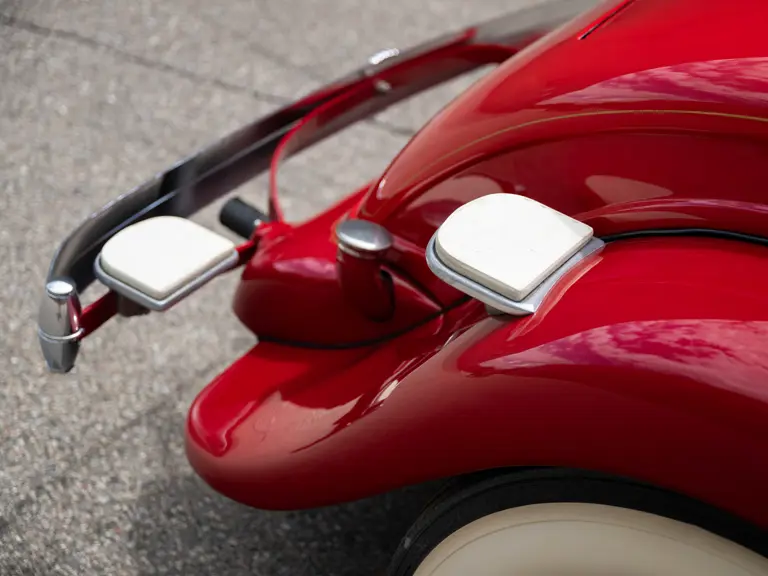
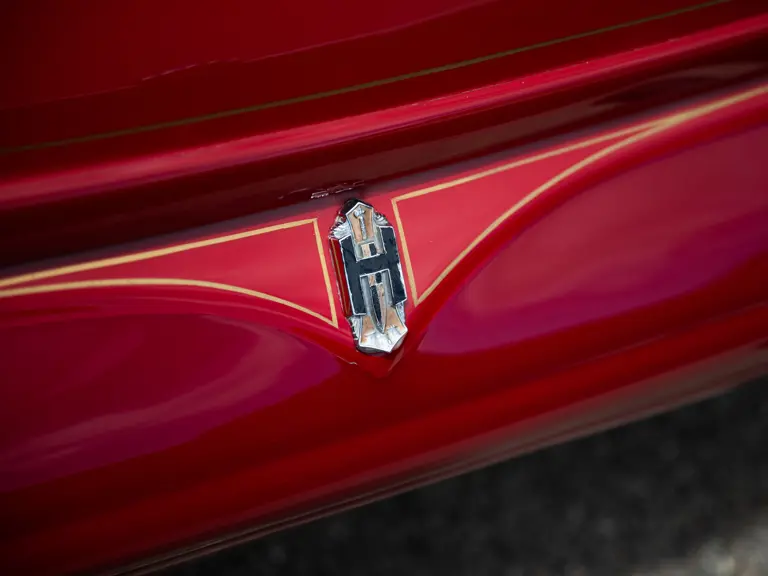
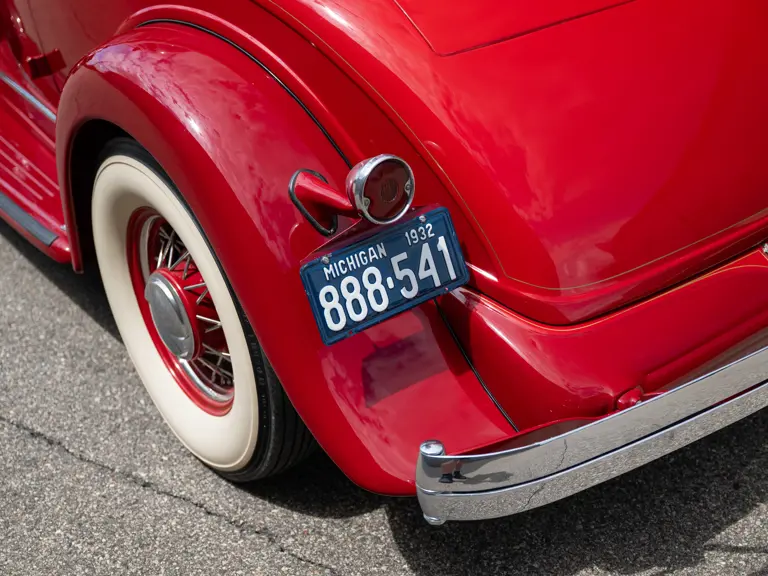
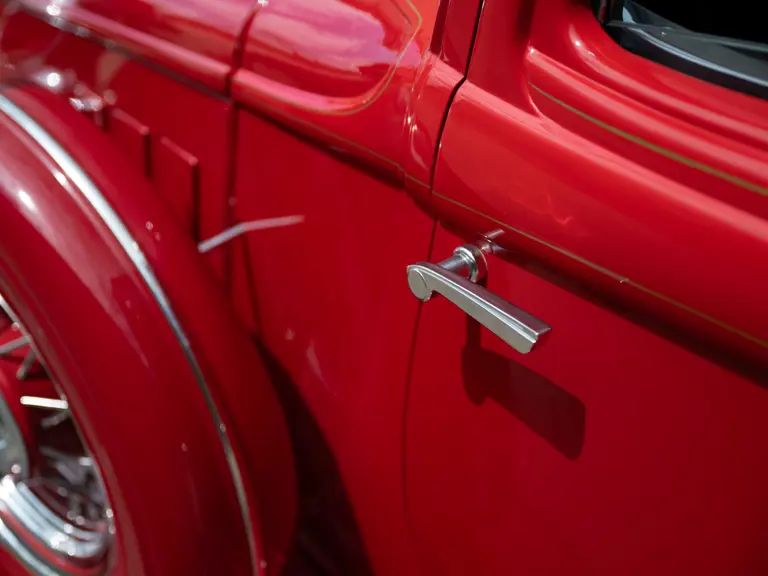

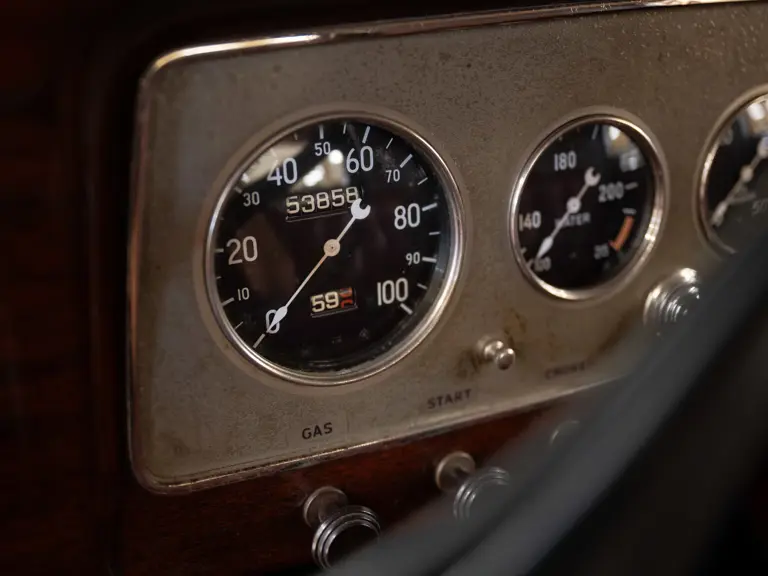
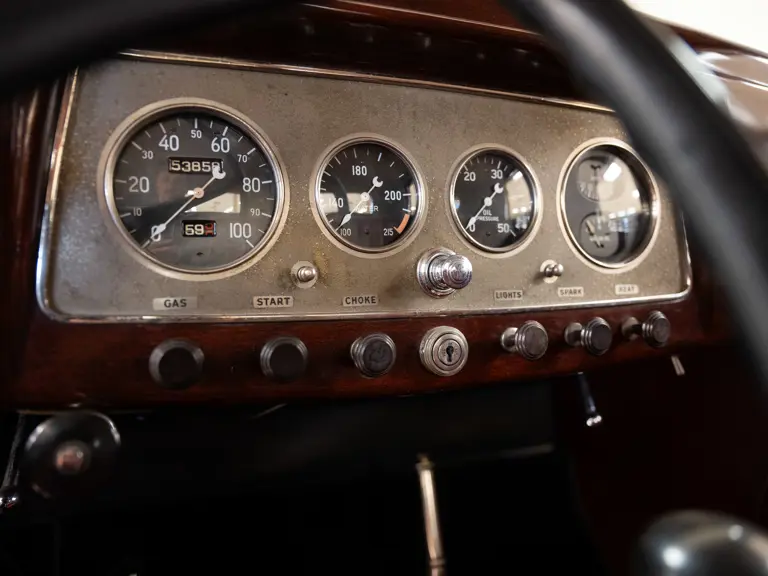

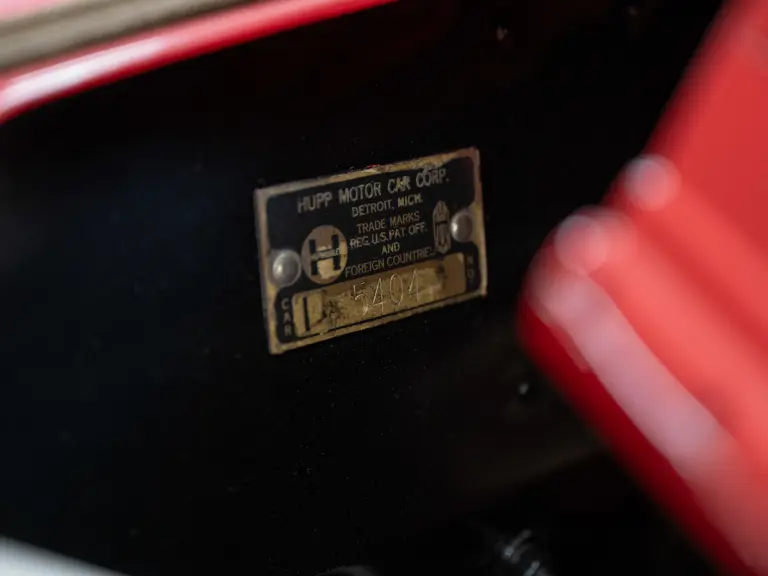
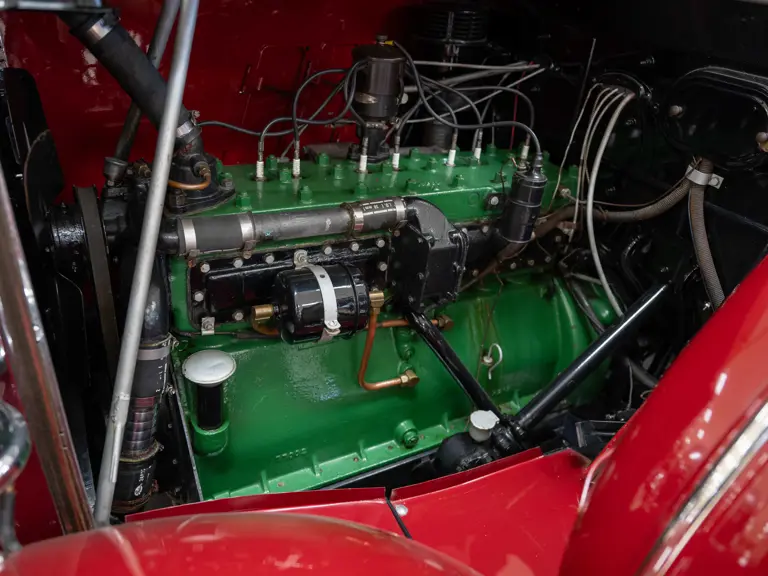
 | Hershey, Pennsylvania
| Hershey, Pennsylvania
